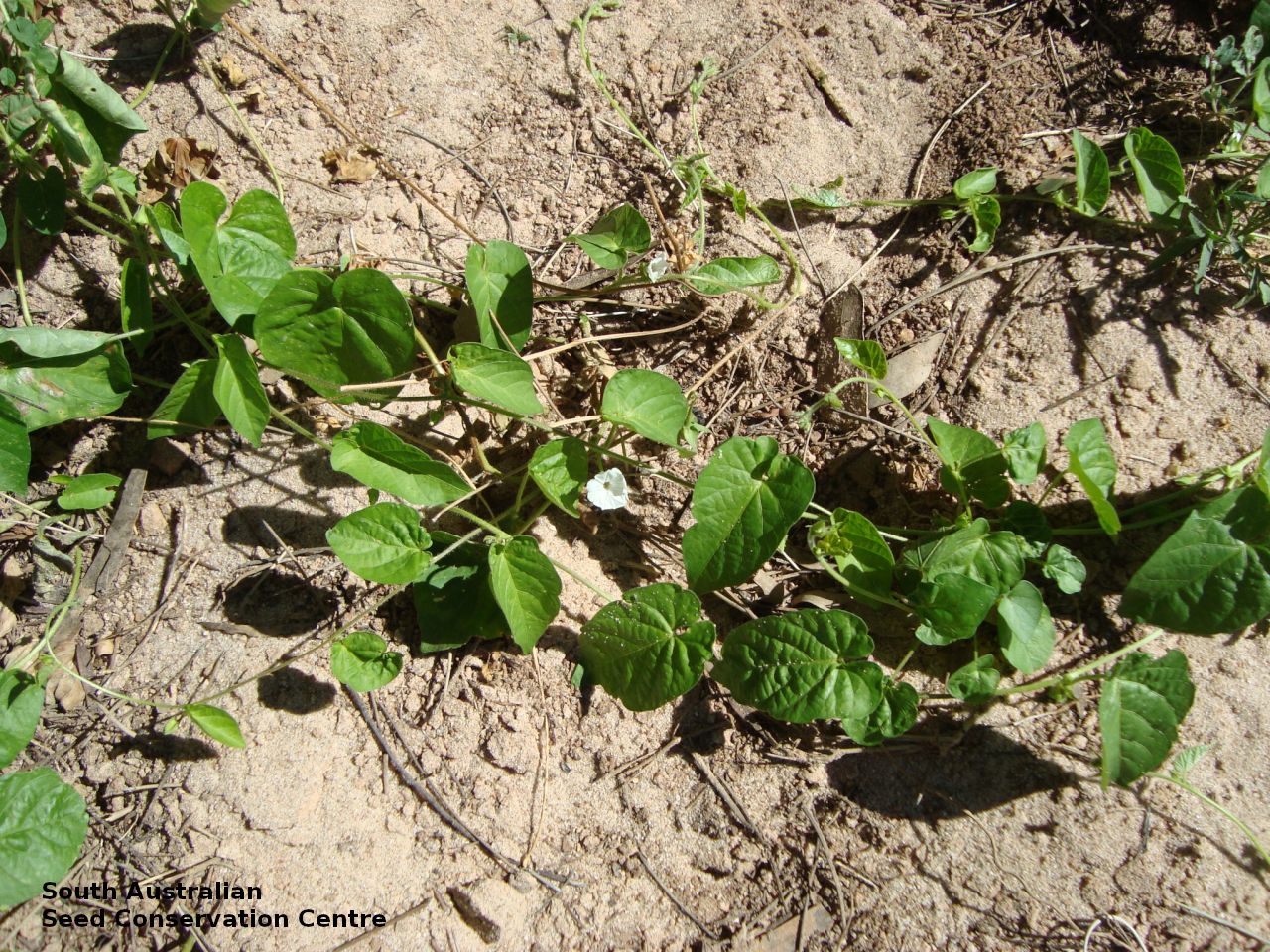
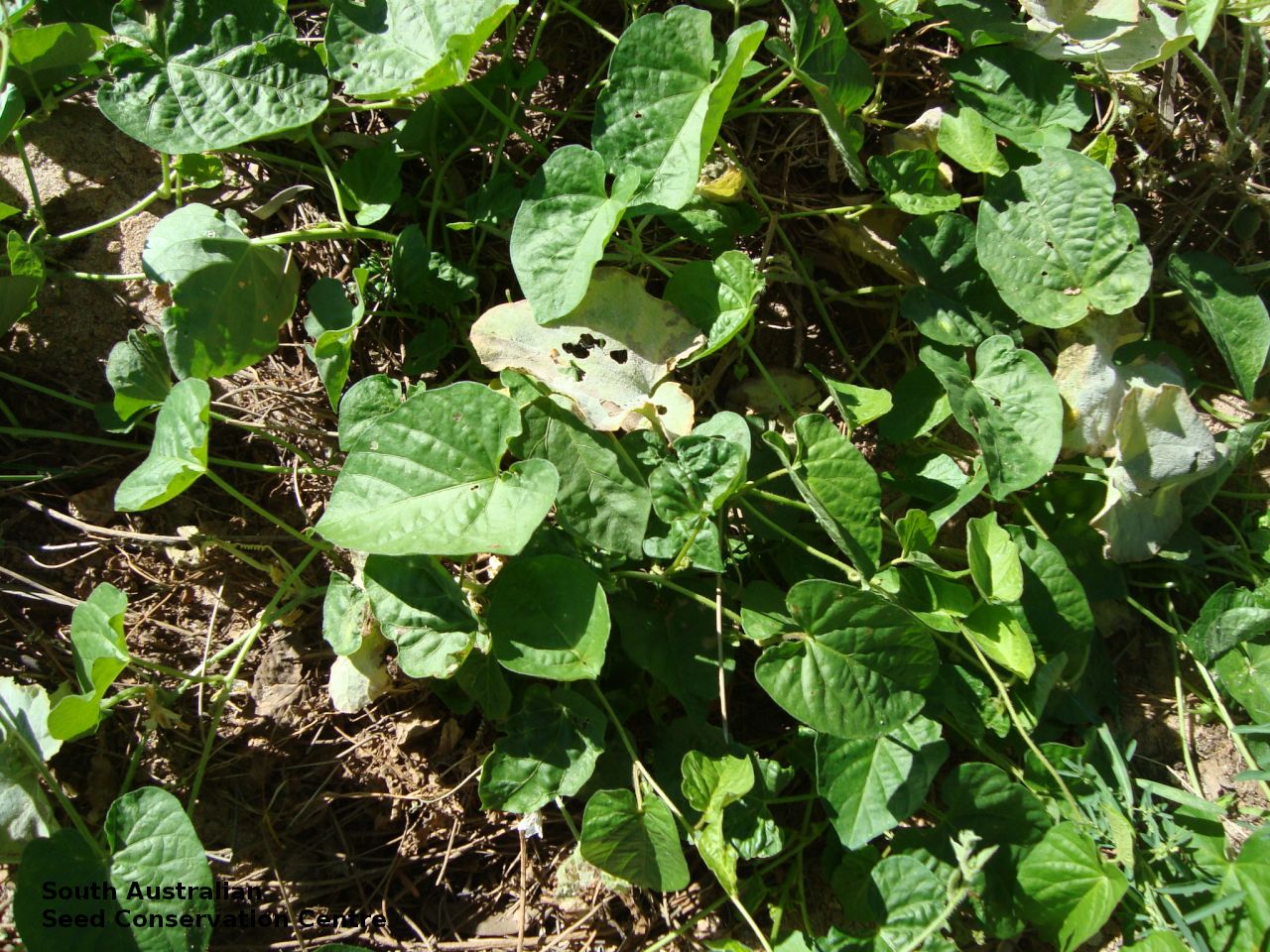
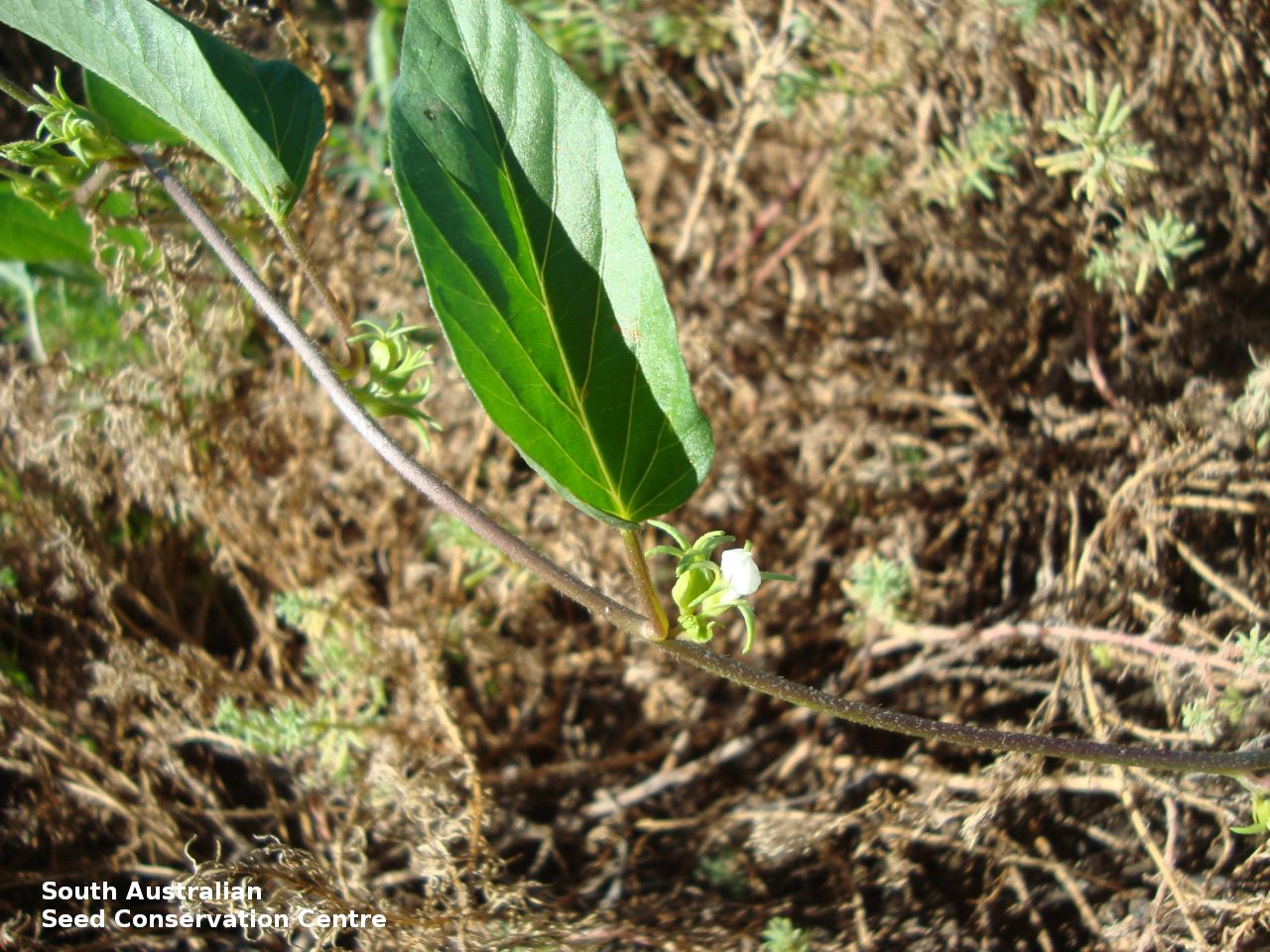
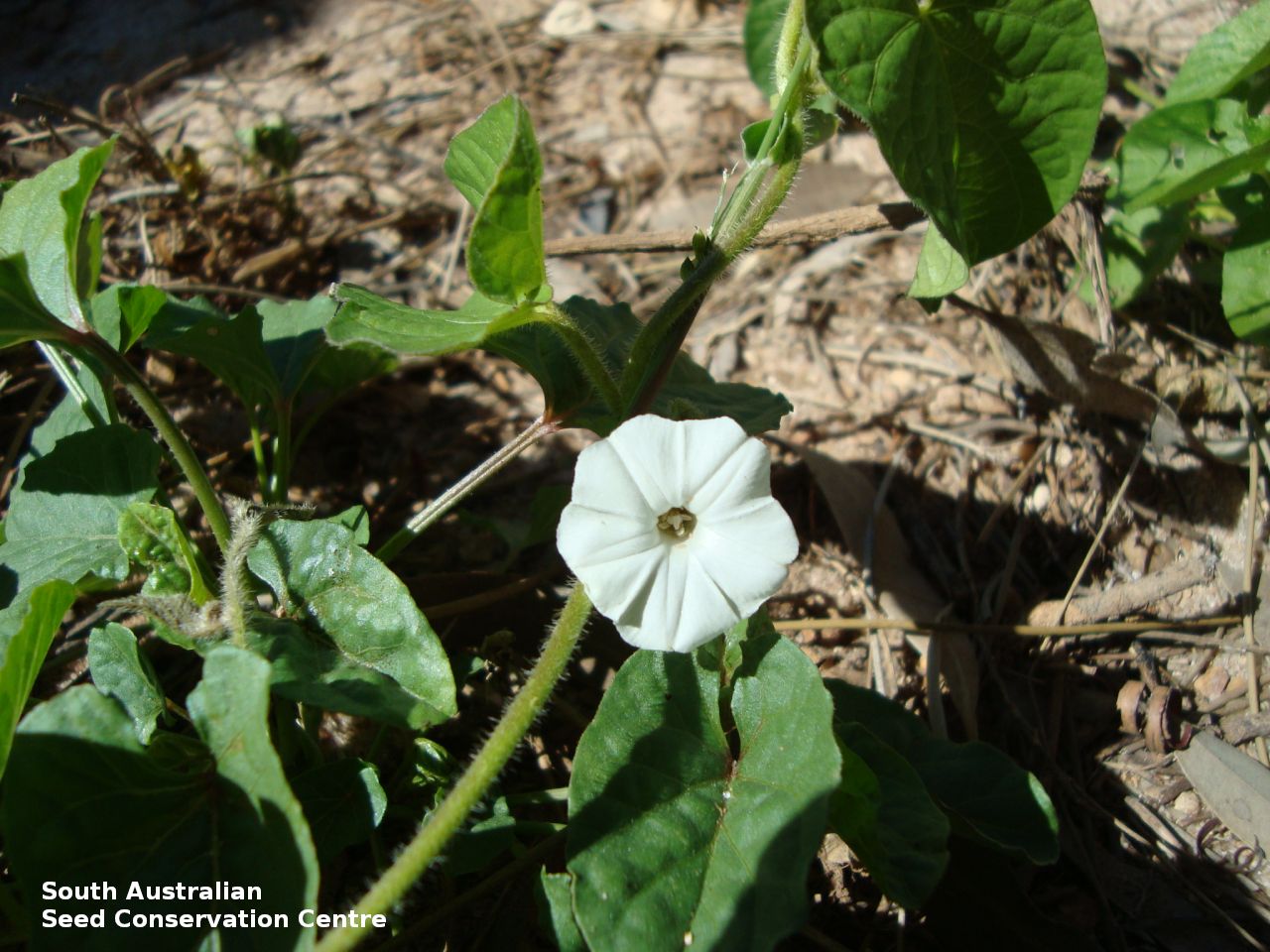
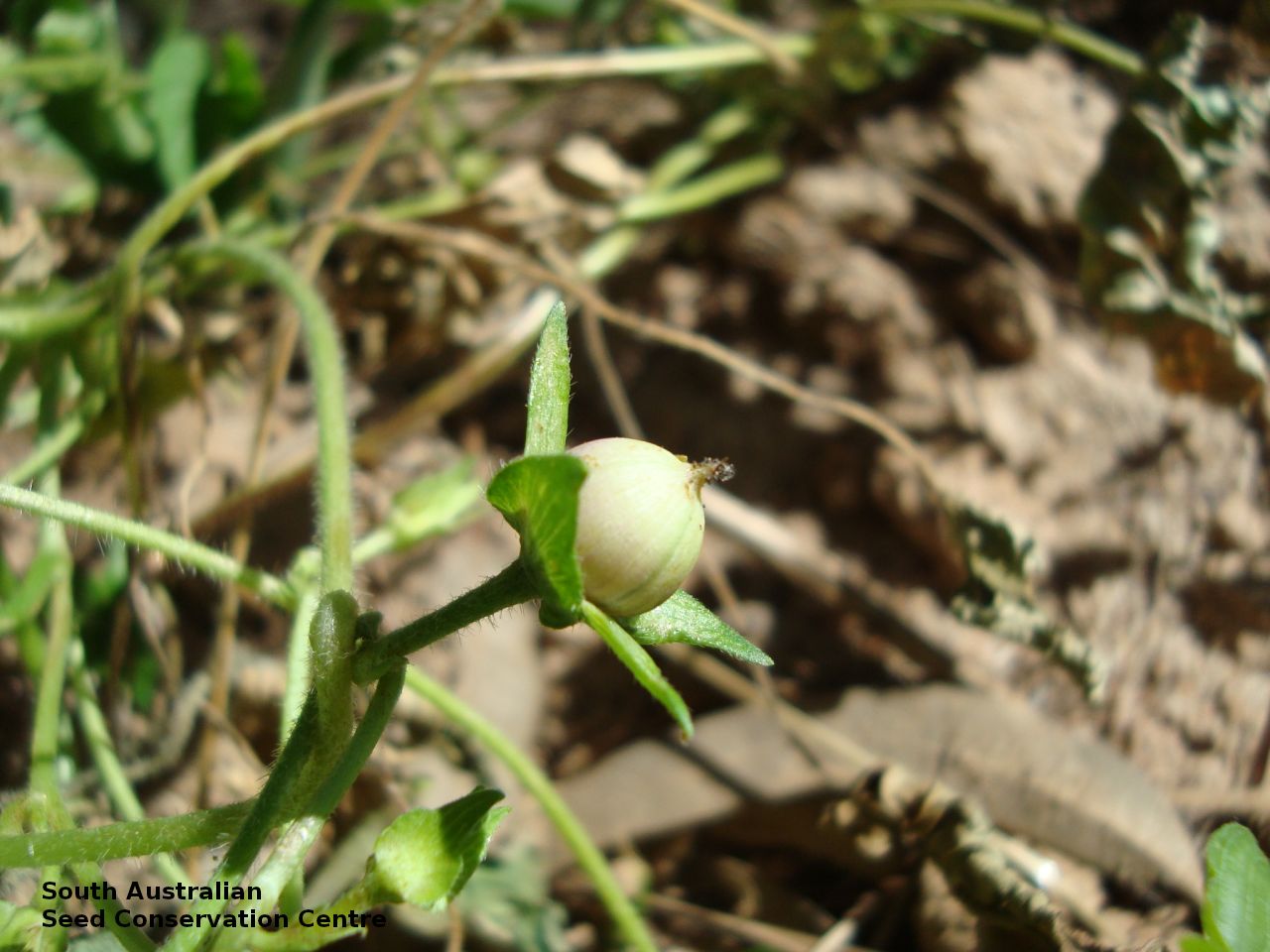
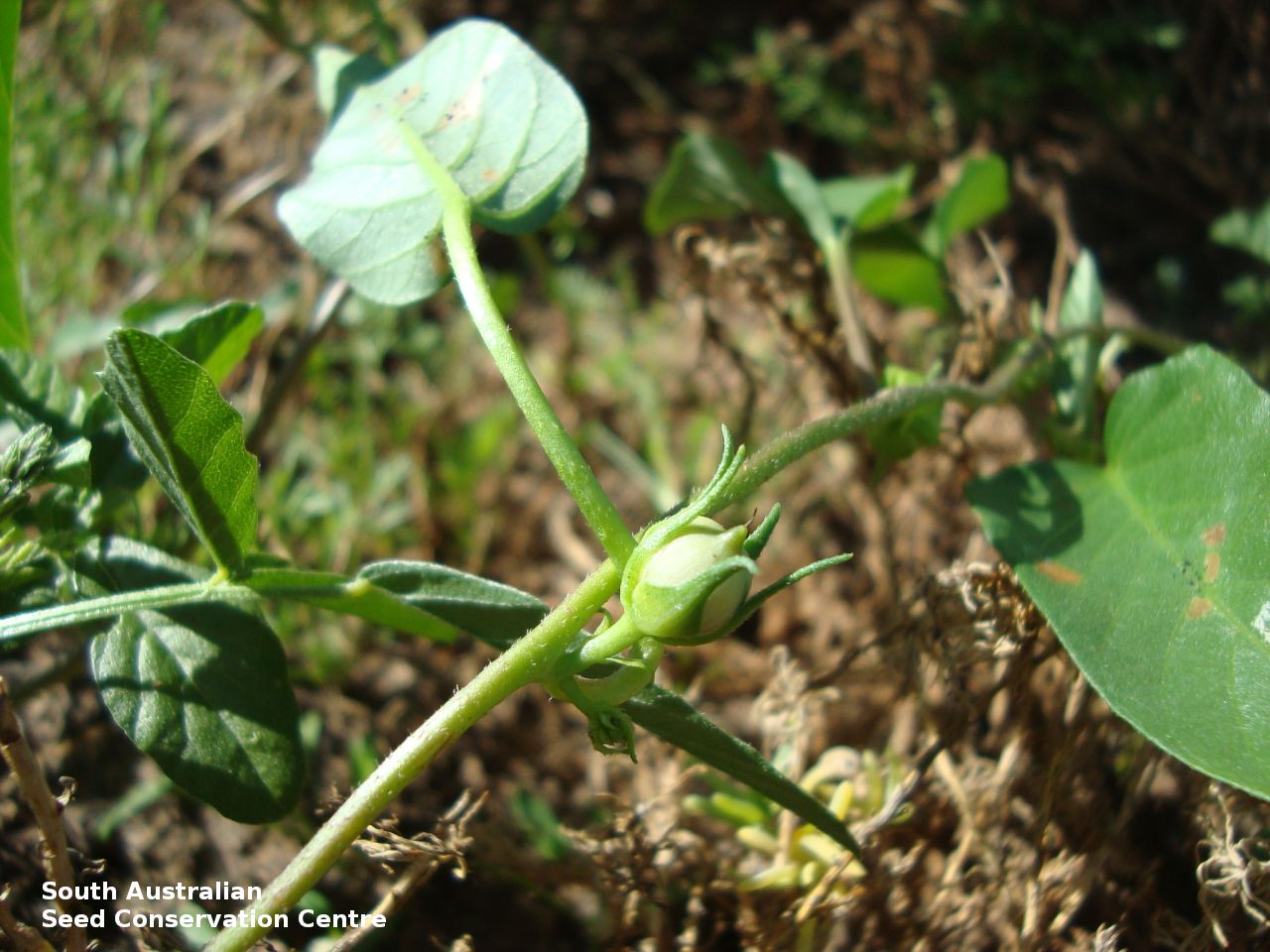


Prior names
Ipomoea plebeia
Common names
Inland Bell-vine
Etymology
Ipomoea from the Greek 'ips' meaning a worm (mistakenly supposed by Linnaeus to mean the bindweed) and 'homoios' meaning like; referring to its twining habit. Racemigera means bearing flowers in racemes.
Distribution and status
Found in the far north-eastern corner of South Australia, growing on sandy soils along watercourses. Also found in Western Australia, Northern Territory and Queensland. Native. Uncommon in South Australia. Uncommon in Western Australia. Common in the other states.
Herbarium region: Lake Eyre
AVH map: SA distribution map (external link)
Plant description
Annual herb covered in soft hairs with twining stems. Leaves ovate to ovate-elliptic, entire, to 8 cm long and 5.5 cm wide, bluntly acute, mucronate, base cordate, glabrous above, moderately soft hairs below. Inflorescence in unbranched clusters with 1–2 large funnel-shaped, white flowers. Flowers throughout the year but mainly between March and August. Fruits are brown ovoid-globular capsule to 8.5 mm diameter, with a persistent style base and splitting longitudinally into 4 valves. Seeds are hairy seed to 5 mm long, with longer hairs along outer ridges. Seed embryo type is folded.
Seed collection and propagation
Collect seeds between May and November. Collect capsules that are maturing, turning brown and contain hard seeds inside. Capsules can be opened or unopened and some seed can be collected from the ground under the plant. Place the capsules in a tray and leave to dry for one to two weeks. Then rub the capsules gently by hand or with a rubber bung to dislodge the seeds. Use a sieve to separate the unwanted material. Store the seeds with a desiccant such as dried silica beads or dry rice, in an air tight container in a cool and dry place. This species has physical dormancy that needs to be overcome for the seed to germinate (e.g. nicking the seed coat).